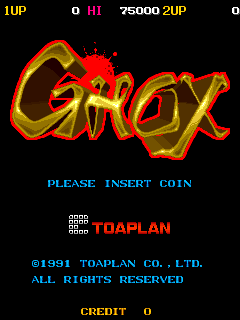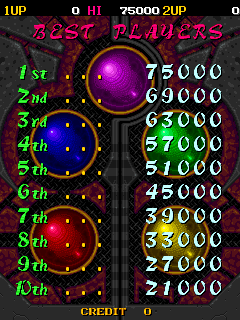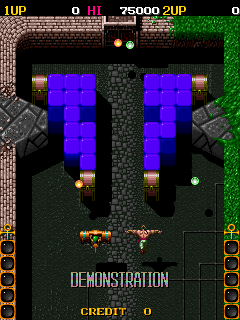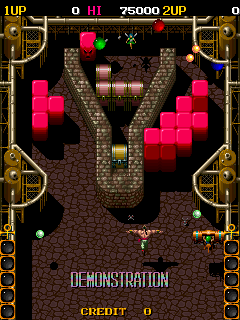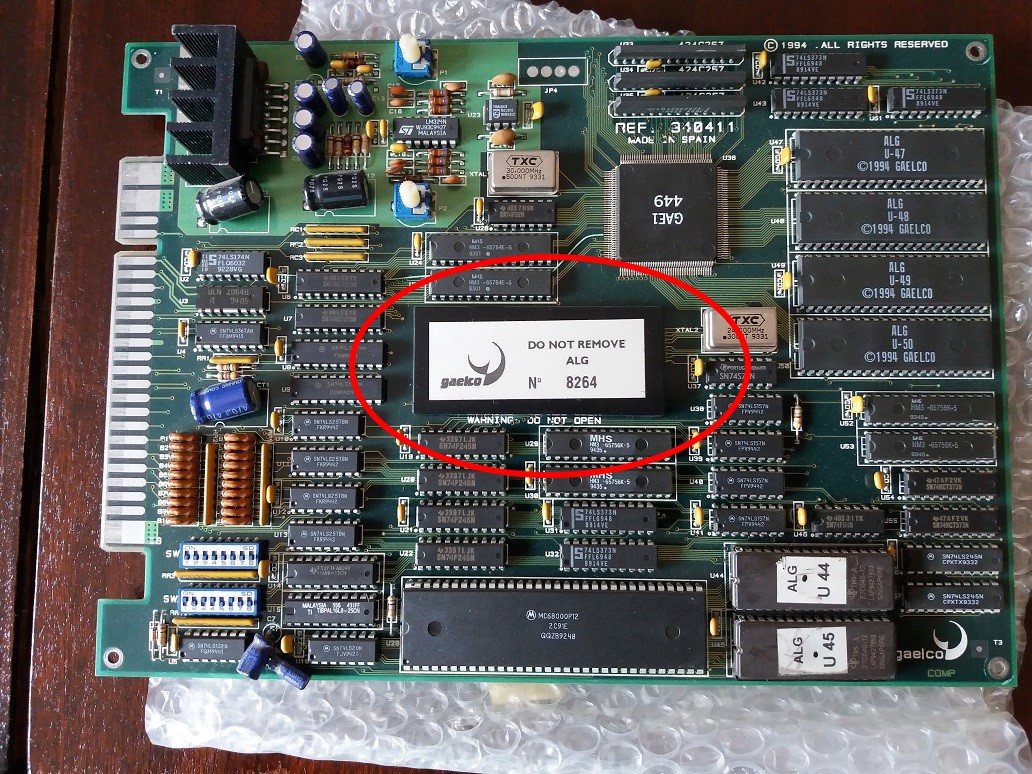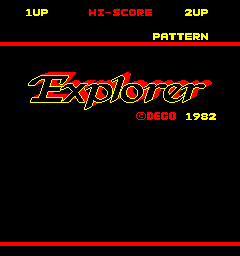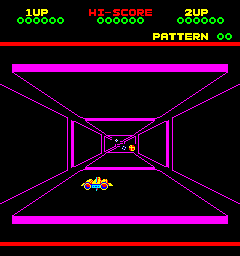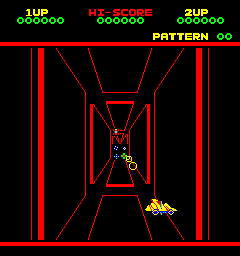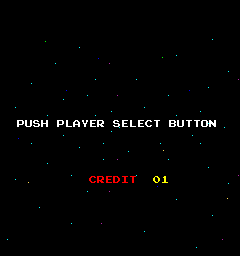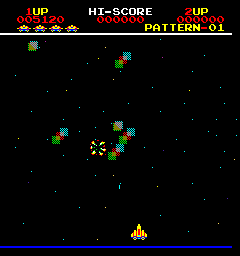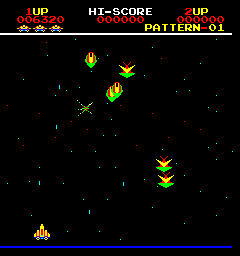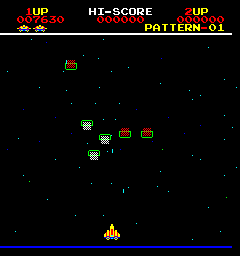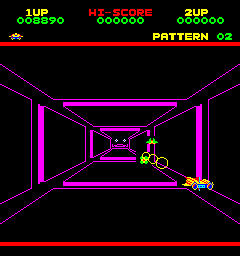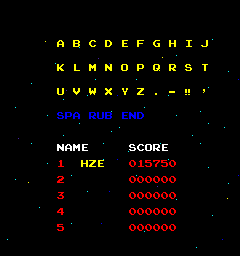Super Real Darwin is a game that was released by Data East in 1987
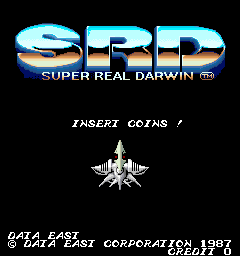
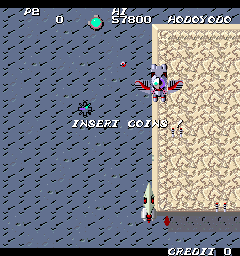
It has been emulated in MAME for a VERY long time. Imperfectly.
If we look at the MAME history of the driver, this is an important entry.
“0.35b12: Boss order in Super Real Darwin should be correct [Jose Miguel Morales Farreras]. Added 2nd player.”
MAME 0.35b12 was released on 1 May 1999, that was the last development on the driver that had any real impact on the gameplay.
The change listed above, made in 1999 is the source of the following piece of code in the simulation of the i8751 protection device that Super Real Darwin makes use of. Prior to this the boss order was *completely* wrong.
The table below is hopefully correct thanks to Jose Miguel Morales Farreras,
but Boss #6 is uncomfirmed as correct.
*/
if (m_i8751_value == 0x8000) m_i8751_return = 0xf580 + 0; /* Boss #1: Snake + Bees */
if (m_i8751_value == 0x8001) m_i8751_return = 0xf580 + 30; /* Boss #2: 4 Corners */
if (m_i8751_value == 0x8002) m_i8751_return = 0xf580 + 26; /* Boss #3: Clock */
if (m_i8751_value == 0x8003) m_i8751_return = 0xf580 + 2; /* Boss #4: Pyramid */
if (m_i8751_value == 0x8004) m_i8751_return = 0xf580 + 6; /* Boss #5: Snake + Head Combo */
if (m_i8751_value == 0x8005) m_i8751_return = 0xf580 + 24; /* Boss #6: LED Panels */
if (m_i8751_value == 0x8006) m_i8751_return = 0xf580 + 28; /* Boss #7: Dragon */
if (m_i8751_value == 0x8007) m_i8751_return = 0xf580 + 32; /* Boss #8: Teleport */
if (m_i8751_value == 0x8008) m_i8751_return = 0xf580 + 38; /* Boss #9: Octopus (Pincer) */
if (m_i8751_value == 0x8009) m_i8751_return = 0xf580 + 40; /* Boss #10: Bird */
if (m_i8751_value == 0x800a) m_i8751_return = 0xf580 + 42; /* End Game(bad address?) */
A couple of months ago Caps0ff dumped the actual i8751 MCU from Super Real Darwin, and today I studied that dump, and hooked it up.
Maybe it shouldn’t come as too much of a surprise that the above piece of simulation code is incorrect, and has been incorrect since 1st May 1999, over 18 years ago.
The value in the table for Boss 6 is actually incorrect as the comment speculates is possible. The code for handling MCU command 0x80xx in the actual MCU dump is as follows, you can see where I’ve commented the different value in the actual code compared to the existing simulation.
-- handling 0x80 (boss selection)
01E7: 75 D0 00 mov psw,#$00
01EA: 11 E7 acall $00E7
01EC: 54 0F anl a,#$0F
01EE: C3 clr c
01EF: 33 rlc a
01F0: FA mov r2,a
01F1: 24 11 add a,#$11
01F3: 83 movc a,@a+pc // 0x1f4 + 0x11 (Table below)
01F4: F8 mov r0,a
01F5: 0A inc r2
01F6: EA mov a,r2
01F7: 24 0B add a,#$0B
01F9: 83 movc a,@a+pc // 0x1fa + 0x0b (Table below)
01FA: F9 mov r1,a
01FB: 89 80 mov p0,r1
01FD: 31 00 acall $0100
01FF: 88 80 mov p0,r0
0201: 11 F9 acall $00F9
0203: 01 D2 ajmp $00D2
-- protection table
0205: F5 80 mov p0,a /* Boss #1: Snake + Bees */
0207: F5 9E mov $9E,a /* Boss #2: 4 Corners */
0209: F5 9A mov $9A,a /* Boss #3: Clock */
020B: F5 82 mov dpl,a /* Boss #4: Pyramid */
020D: F5 86 mov $86,a /* Boss #5: Snake + Head Combo */
020F: F5 8E mov $8E,a /* Boss #6 - F598 is used in the simulation! */
0211: F5 9C mov $9C,a /* Boss #7: Dragon */
0213: F5 A0 mov p2,a /* Boss #8: Teleport */
0215: F5 A6 mov $A6,a /* Boss #9: Octopus (Pincer) */
0217: F5 A8 mov ie,a /* Boss #10: Bird */
0219: 00 nop
021A: 00 nop
Boss 6 has 2 forms, after you destroy the first form / pattern it evolves into the 2nd form. The value in the table above puts the boss directly in the 2nd form which causes issues with how it appears, priority, and of course makes it a lot easier than it should be as you only have to destroy the 2nd form. Using the real MCU dump (or a corrected value obtained from it) gives the correct boss form / order.
I’ve recorded 2 videos of this. First is the old, buggy behavior. (Cheats are enabled to make demonstration easier, so nothing can kill me)
Content not available.
Please allow cookies by clicking Accept on the banner
The 2nd video is the fixed behavior, which should be how things are as of the next MAME release.
Content not available.
Please allow cookies by clicking Accept on the banner
I’ve had to bump the interleave in the driver significantly to stop it missing protection commands from time to time and crashing (hopefully what I’ve done is good enough) but the actual data from the MCU is now 100% correct to the original as we’re running the actual MCU code rather than a simulation. This is just one of many reasons why getting certain MCUs to people who can dump them is important, you never quite know if things are accurate until you’ve studied the real code.
